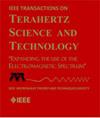粉末压片中THz-TDS伪特征的起源
IF 3.9
2区 工程技术
Q2 ENGINEERING, ELECTRICAL & ELECTRONIC
IEEE Transactions on Terahertz Science and Technology
Pub Date : 2025-03-10
DOI:10.1109/TTHZ.2025.3549944
引用次数: 0
摘要
太赫兹时域光谱(THz-TDS)是科学和工业分析的重要工具,然而,许多通常分析的产品,例如在制药,农业和采矿部门发现的产品,都是以粉末或颗粒状材料生产的,据报道,这些样品的形态会产生异常的光谱特征,这些特征通常会模糊已知的材料共振。人们对这些异常特征的原因了解甚少,因此很难预测它们的存在,并限制了太赫兹- tds对此类材料的适用性。在这里,我们通过对不同微球大小和浓度的两部分粉末压实材料进行广泛的实验测量,系统地研究了颗粒压实材料的样品形态如何产生异常光谱特征。此外,我们采用光线追踪模拟来确定这些光谱特征由于异质样品内光程长度的变化而产生的物理机制。我们认为,这是第一次对粉末样品中虚假光谱特征的物理原因进行了充分的解释,并提出了一种强大的方法来模拟这种效应。通过理解这些特征,我们提出,它们的存在可以用来提取样品的形态特性,从而增强太赫兹- tds对颗粒材料的效用,而不是被视为寄生效应。本文章由计算机程序翻译,如有差异,请以英文原文为准。
Unveiling the Origin of Spurious Features in THz-TDS of Powder Compacts
Terahertz time-domain spectroscopy (THz-TDS) is a vital tool for scientific and industrial analysis, however, many commonly analyzed products, such as those found in pharmaceutical, agriculture, and mining sectors, are produced as powders or granular materials, and these sample morphologies have been reported to produce anomalous spectral features which can often obscure known material resonances. The cause of these anomalous features has been poorly understood, making it difficult to predict their presence and limiting the applicability of THz–TDS for such materials. Here, we systematically study how the sample morphology of granular compacts produces anomalous spectral features by performing extensive experimental measurements on two-part powder compacts with varying microsphere size and concentration. Further, we employ ray-tracing simulations to identify the physical mechanism whereby these spectral features arise owing to variations in optical path length within the heterogeneous sample. We believe this is the first time that the physical cause of spurious spectral features within powder samples has been adequately explained and that a robust method has been presented for modeling this effect. By understanding these features, we propose that instead of being seen as a parasitic effect, their presence can be utilised to extract morphological properties of the samples, thereby enhancing the utility of THz-TDS for granular materials.
求助全文
通过发布文献求助,成功后即可免费获取论文全文。
去求助
来源期刊

IEEE Transactions on Terahertz Science and Technology
ENGINEERING, ELECTRICAL & ELECTRONIC-OPTICS
CiteScore
7.10
自引率
9.40%
发文量
102
期刊介绍:
IEEE Transactions on Terahertz Science and Technology focuses on original research on Terahertz theory, techniques, and applications as they relate to components, devices, circuits, and systems involving the generation, transmission, and detection of Terahertz waves.
 求助内容:
求助内容: 应助结果提醒方式:
应助结果提醒方式:


